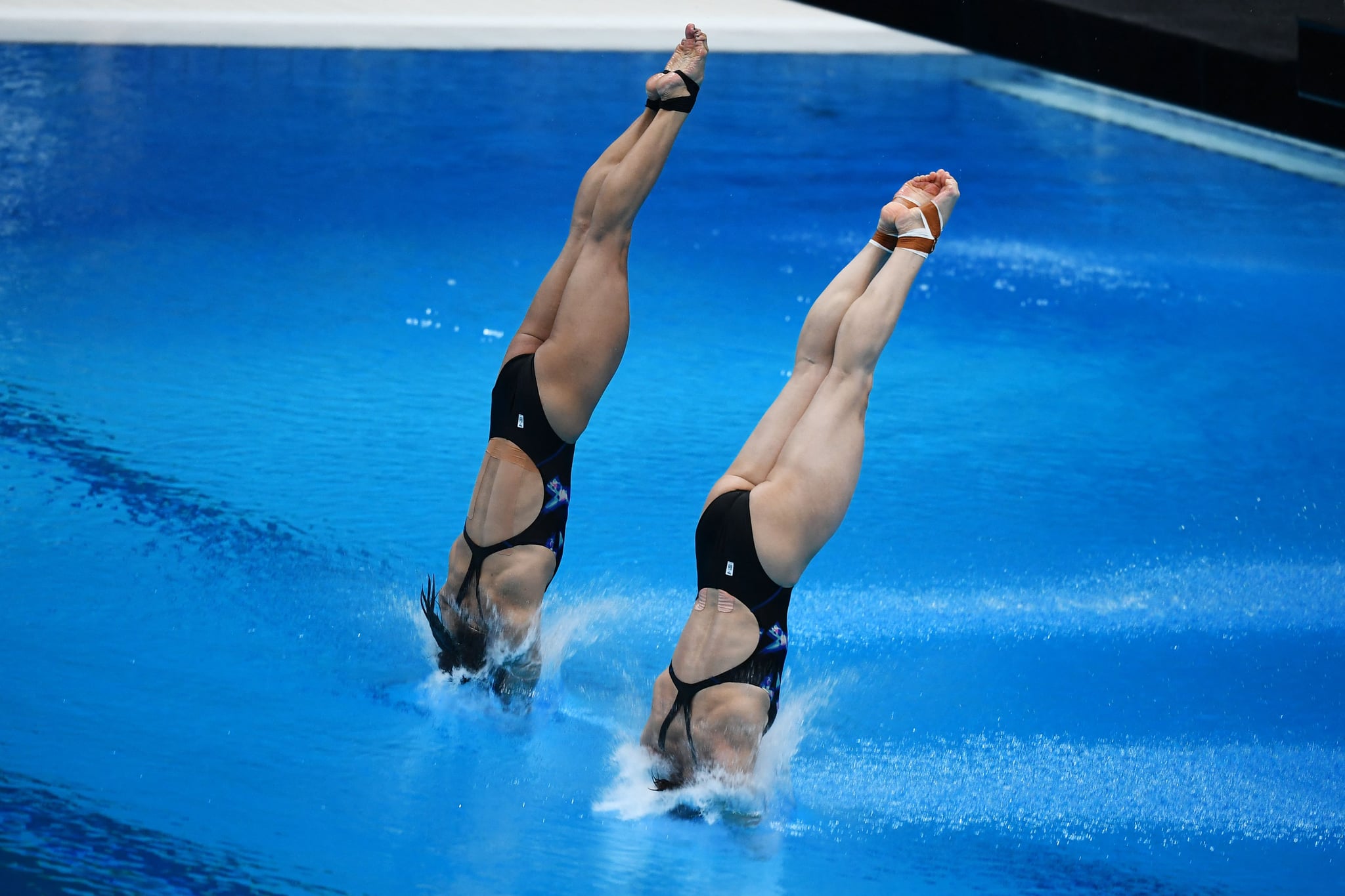
Diving is one of the most anticipated events at the Summer Olympics, with athletes performing gravity-defying leaps that, on both an aesthetic and athletic level, seem almost impossible to judge. But for some very unlucky panels of judges, that is exactly the job — so, before you tune in to watch the Games in Tokyo, check out this simple guide to how each of the diving events is scored.
How Is Individual Diving Scored?
There are four individual diving events at the Olympics: 3m springboard and 10m platform, for both men and women. These competitions occur across three rounds. Each round consists of five dives, and athletes are required to perform a different type of dive each time, chosen from six categories (forward, back, reverse, inward, twisting, and armstand). Dives are assigned a degree of difficulty based on factors such as approach, entry, position, somersaults, and twists.
According to the FINA rulebook, a panel of seven judges assigns a score to each dive, on a scale of 0 to 10, down to half-point increments. The two highest and two lowest scores are discarded, and the remaining three are added together; that result is then multiplied by the difficulty value to award a dive score. At the end of the round, the five dive scores are added together for a final score. In the Olympic preliminaries, the top 18 divers advance; in the semifinals, the top 12 advance. The top three scorers in the final are then awarded gold, silver, and bronze.
How Is Synchronized Diving Scored?
The scoring system is similar in synchronized diving, but the event is structured differently. There’s just one round of competition instead of three, and teams perform six dives instead of five. Athletes must perform at least one dive from the five synchronized diving categories (forward, back, reverse, inward, and twisting). The first two dives are assigned a difficulty of 2.0, regardless of the dive performed, and the remaining four are assigned a difficulty score based on specific criteria, just as they are in the individual events.
For synchronized diving, the judging panel is comprised of 11 judges: five judging synchronization and three each assigned to evaluate each individual diver. Judges assign scores on the same 0 to 10 point scale as the individual events. The highest and lowest synchronization scores are discarded, as are the top and bottom scores for each individual diver. The remaining five scores are added together and multiplied by 3/5, then multiplied again by the difficulty score to award a dive score. The six dive scores are added together to reach a total score, and the top three teams are the medalists.
